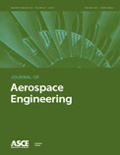
JOURNAL OF AEROSPACE ENGINEERING
Scope & Guideline
Advancing aerospace innovation for a soaring future.
Introduction
Aims and Scopes
- Aerodynamic Analysis and Optimization:
Research involving the aerodynamic performance of various aerospace vehicles, including UAVs and rockets, focusing on flow characteristics, drag reduction, and optimization techniques. - Control Systems and Guidance Techniques:
Development and application of advanced control strategies for aerospace systems, including fault-tolerant controls, guidance laws for missiles and UAVs, and trajectory optimization. - Propulsion Systems and Combustion Characteristics:
Investigations into propulsion technologies, including engines and alternative fuels, and studies on combustion processes to enhance efficiency and performance. - Structural Integrity and Material Performance:
Studies focused on the mechanical properties, fatigue behavior, and structural integrity of aerospace materials, including composites and alloys under various operational conditions. - Spacecraft Dynamics and Navigation:
Research on spacecraft dynamics, navigation algorithms, and mission planning to enhance the reliability and precision of space operations. - Robotics and Autonomous Systems:
Exploration of robotics applications in aerospace, including autonomous UAVs and robotic manipulation within space environments. - Data Analysis and Machine Learning Applications:
Utilization of data-driven methods and machine learning for predictive maintenance, anomaly detection, and optimization in aerospace systems.
Trending and Emerging
- Autonomous Systems and AI Integration:
There is a significant rise in research related to autonomous systems, particularly UAVs, integrating artificial intelligence and machine learning for enhanced decision-making and autonomy. - Sustainable and Green Propulsion Technologies:
Emerging research emphasizes sustainable propulsion technologies, including electric propulsion and hybrid systems, reflecting the industry's shift towards reducing environmental impact. - Advanced Materials and Manufacturing Techniques:
Innovations in materials science, including the development of advanced composites and additive manufacturing techniques, are gaining traction, focusing on lightweight and high-performance materials. - Data-Driven Decision Making and Predictive Maintenance:
A growing trend in using data analytics and machine learning for predictive maintenance and operational efficiency in aerospace systems is evident, showcasing the importance of big data in engineering. - Hypersonic Flight and Space Exploration Technologies:
Research on hypersonic vehicles and new technologies for space exploration is becoming more prominent, driven by advancements in materials and propulsion systems that can withstand extreme conditions. - Cyber-Physical Systems and Networked Aerospace Systems:
Increasing interest in cyber-physical systems and their application in networked aerospace systems, including cooperative UAVs and smart air traffic management, reflects the trend towards interconnected operations.
Declining or Waning
- Traditional Aerodynamics without Computational Approaches:
There is a noticeable decrease in research focused solely on traditional aerodynamic theories without incorporating computational fluid dynamics (CFD) or advanced numerical methods. - Conventional Propulsion Systems:
Research centered on conventional propulsion systems is waning, possibly due to the increasing focus on electric and hybrid propulsion technologies. - Static Structural Analyses:
The emphasis on static structural analyses without dynamic considerations is diminishing, as there is a growing trend toward dynamic simulations and real-time analysis in aerospace applications. - Basic Flight Control Techniques:
Basic flight control methods are becoming less common, with a shift towards more sophisticated, adaptive, and robust control strategies that account for uncertainties and disturbances. - Generalized UAV Applications:
Research on generalized UAV applications without specific focus on advanced technologies or applications is declining, as the field moves towards more specialized and application-driven studies.
Similar Journals
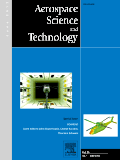
Aerospace Science and Technology
Connecting Scholars, Advancing Aerospace KnowledgeAerospace Science and Technology, published by ELSEVIER FRANCE-EDITIONS SCIENTIFIQUES MEDICALES ELSEVIER, is a leading journal in the field of aerospace engineering, boasting an impressive 2023 Q1 ranking and a significant position in the Scopus Ranks, where it stands at Rank #7 out of 153 in the Engineering - Aerospace Engineering category, reflecting its credibility and impact with a 95th percentile ranking. Since its inception in 1997, this journal has provided a robust platform for the dissemination of pioneering research and advancements in aerospace technology, focusing on innovative methodologies and applications in the aerospace sector. With a commitment to open access, researchers, professionals, and students can easily engage with cutting-edge findings that drive the industry forward. The journal not only seeks to expand knowledge but also aims to foster collaboration among scholars across the globe, making it an essential resource for anyone looking to stay at the forefront of aerospace innovation. For more information, visit its website or refer to its dedicated address at 65 Rue Camille Desmoulins, CS50083, 92442 Issy-Les-Moulineaux, France.

Journal of Aeronautics Astronautics and Aviation
Innovating the Future of Flight and Space ExplorationJournal of Aeronautics Astronautics and Aviation, published by the Aeronautical & Astronautical Society Republic of China, is a premier scholarly journal dedicated to advancing knowledge in the dynamic fields of aerospace engineering and space sciences. Operating under the ISSN 1990-7710, this journal plays a pivotal role in disseminating innovative research and practice-oriented studies that address both theoretical and applicative aspects of aeronautics and astronautics. With an impressive history spanning from 2006 to 2024, the journal has established itself as a valuable resource for researchers, professionals, and students alike, featuring contributions that reflect the latest developments and trends within the industry. In the latest rankings, it holds a Q3 classification in Aerospace Engineering and Q4 in Space and Planetary Science, indicating its growing influence despite its niche scope. With an open access model that facilitates widespread readership, the Journal of Aeronautics Astronautics and Aviation strives to foster collaboration and knowledge sharing in these ever-evolving scientific domains.
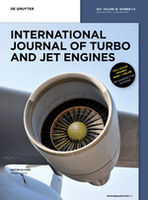
INTERNATIONAL JOURNAL OF TURBO & JET-ENGINES
Advancing the Future of Aerospace EngineeringINTERNATIONAL JOURNAL OF TURBO & JET-ENGINES, published by WALTER DE GRUYTER GMBH, is an esteemed academic journal dedicated to the field of aerospace engineering, specifically focusing on the innovative development and application of turbo and jet engine technologies. Established in 1985, this journal has maintained its commitment to advancing scholarly research and discussion, attracting contributions from leading experts across the globe. With a Scopus rank of #91 out of 153 in the field of Aerospace Engineering, placing it in the 40th percentile and categorized in Q3 for 2023, the journal provides a vital platform for disseminating high-quality research findings and insights into evolving engine technologies. Although it follows a subscription model, its rigorous peer-review process ensures that published articles contribute significantly to the body of knowledge in aerospace engineering and related disciplines. For researchers, professionals, and students alike, the INTERNATIONAL JOURNAL OF TURBO & JET-ENGINES stands as a crucial resource for staying updated on the latest advances and trends in turbojet and turbofan systems.

Aerospace Research in Bulgaria
Fostering collaboration in the aerospace community.Aerospace Research in Bulgaria is a prestigious academic journal dedicated to advancing the field of aerospace engineering and technology. Published by the BULGARIAN ACADEMY OF SCIENCES, SPACE RESEARCH & TECHNOLOGY INSTITUTE (SRTI-BAS), this journal serves as a key platform for researchers, engineers, and professionals seeking to share original research, innovative technologies, and critical reviews related to aerospace applications. With the ISSN 1313-0927 and E-ISSN 2367-9522, the journal aims to contribute significantly to the global aerospace community. Although the journal operates under a traditional access model, it emphasizes the importance of research collaboration and disseminating knowledge in the ever-evolving aerospace sector. The editorial team is committed to maintaining high standards in peer review, making it an essential resource for academics and practitioners alike. Located at ACAD. GEORGI BONCHEV STR., SOFIA 1113, BULGARIA, this journal not only highlights Bulgarian contributions to aerospace research but also aims to engage with a broader international audience, fostering advances that propel the industry forward.

Propulsion and Power Research
Fueling Knowledge in Propulsion and Power Technologies.Propulsion and Power Research, published by KEAI PUBLISHING LTD, is a leading Open Access journal that has been advancing the field of propulsion and power systems since its inception in 2012. With its commitment to fostering scientific discourse and innovation, the journal has gained a prominent position within academia, achieving a Q1 ranking in multiple categories such as Aerospace Engineering, Automotive Engineering, and Fluid Flow and Transfer Processes as of 2023. With an impressive ranking of #18 out of 153 in Aerospace Engineering and consistent recognition in the Scopus rankings, the journal explores critical advancements and research findings that propel the industry forward. As an Open Access publication, it ensures that groundbreaking research is readily available to a broad audience, enhancing collaboration between researchers, practitioners, and students. The journal's scope encompasses a wide range of topics within propulsion and energy solutions, making it an essential resource for anyone keen on discovering significant developments in this dynamic field.
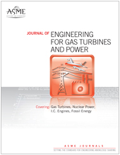
JOURNAL OF ENGINEERING FOR GAS TURBINES AND POWER-TRANSACTIONS OF THE ASME
Exploring Breakthroughs in Energy and AerospaceJournal of Engineering for Gas Turbines and Power - Transactions of the ASME, published by the esteemed American Society of Mechanical Engineers (ASME), is a leading interdisciplinary journal dedicated to advancing the fields of energy engineering, aerospace, nuclear energy, and mechanical engineering. With an impressive history dating back to 1960 and continuing its contributions through 2024, this journal boasts a Q2 ranking in multiple engineering categories, reflecting its strong impact on both academia and industry. Although not an open-access journal, it provides invaluable insights and research findings that cater to the needs of professionals, researchers, and students alike. The journal's ISSN is 0742-4795 with an E-ISSN of 1528-8919, ensuring widespread visibility in the global academic community. Indexed in Scopus, it ranks notably within its fields—21st in Nuclear Energy and Engineering and 51st in Aerospace Engineering—underscoring its relevance and contribution to critical technological advancements. Researchers in this domain will find the journal a vital resource for innovative studies, practical applications, and the latest developments related to gas turbines and power generation.

Advances in Aircraft and Spacecraft Science
Exploring the Frontiers of Flight and Space ExplorationAdvances in Aircraft and Spacecraft Science is a distinguished journal published by TECHNO-PRESS, focusing on the rapidly evolving fields of aerospace engineering and fluid dynamics. With an ISSN of 2287-528X and an E-ISSN of 2287-5271, this journal is an invaluable resource for researchers, professionals, and students dedicated to advancing knowledge in aircraft and spacecraft technologies. Established in 2014, the journal is committed to disseminating high-quality research findings and innovative methodologies, ensuring that cutting-edge studies can be accessed globally. Despite its current position in the Q4 category for both aerospace engineering and fluid flow transfer processes, it continues to carve a niche in the academic landscape, with Scopus rankings highlighting its contribution to these fields. Operating from South Korea, Advances in Aircraft and Spacecraft Science aims to inspire collaboration and knowledge-sharing among scholars, fostering advancements that drive the aerospace industry forward.

Journal of Aerospace Technology and Management
Pioneering Research in Aerospace Engineering and Beyond.The Journal of Aerospace Technology and Management, published by the Instituto de Aeronáutica e Espaço (IAE), serves as a pivotal platform for the dissemination of innovative research in the fields of Aerospace Engineering and Computational Mechanics since its inception in 2009. With an ISSN of 1984-9648 and an E-ISSN of 2175-9146, this Open Access journal facilitates unrestricted access to quality research, fostering knowledge sharing and collaboration among researchers, professionals, and academic institutions worldwide. Based in Brazil, it ranks in the Q3 category according to the latest metrics (2023), highlighting its growing influence and relevance in the competitive landscape of aerospace studies. The journal currently boasts notable Scopus rankings, ensuring that published works achieve widespread recognition and impact within the scientific community. Its diverse scope encompasses a blend of theoretical and applied research, making it an indispensable resource for those seeking to explore groundbreaking advancements in aerospace technologies and management.

International Journal of Aeronautical and Space Sciences
Connecting Research and Innovation in AerospaceThe International Journal of Aeronautical and Space Sciences, published by Springer, is a prominent platform dedicated to advancing research and innovation in the fields of Aerospace Engineering, Control and Systems Engineering, Electrical and Electronic Engineering, and Materials Science. With an ISSN of 2093-274X and an E-ISSN of 2093-2480, the journal has established itself as a vital resource since its inception in 2011, currently offering insights that span a wide range of contemporary challenges and technological advancements in aeronautics and space exploration. Ranking in the Q2 category across multiple disciplines, including Aerospace and Control Engineering, signifies its recognized impact and quality within the academic community. Although not an open-access journal, it remains accessible to researchers, professionals, and students seeking to enhance their understanding of complex aerospace systems and their applications. The journal’s commitment to publishing high-quality research makes it indispensable for those aiming to contribute to, or stay informed about, the evolving landscape of aerospace technology.
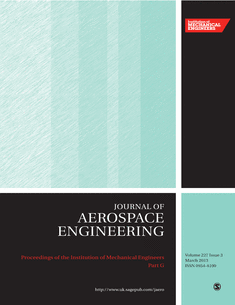
PROCEEDINGS OF THE INSTITUTION OF MECHANICAL ENGINEERS PART G-JOURNAL OF AEROSPACE ENGINEERING
Shaping the Future of Aerospace EngineeringPROCEEDINGS OF THE INSTITUTION OF MECHANICAL ENGINEERS PART G-JOURNAL OF AEROSPACE ENGINEERING, published by SAGE PUBLICATIONS LTD, stands as a pivotal resource for those immersed in the disciplines of aerospace and mechanical engineering. With an ISSN of 0954-4100 and E-ISSN of 2041-3025, this journal not only contributes to the academic community but also reflects a robust commitment to advancing knowledge within these fields. Operating from the United Kingdom, it has garnered a respectable reputation, evidenced by its category quartiles—ranking Q3 in both Aerospace Engineering and Mechanical Engineering as of 2023. Established in 1989, the journal has evolved substantially over the years, serving as a platform for groundbreaking research and innovative methodologies. Researchers, professionals, and students alike will find a wealth of insights that foster collaboration and advance the frontiers of engineering. Although currently not available as an Open Access publication, the journal remains a critical reference point for those looking to deepen their understanding and contribute to ongoing developments in aerospace technology.